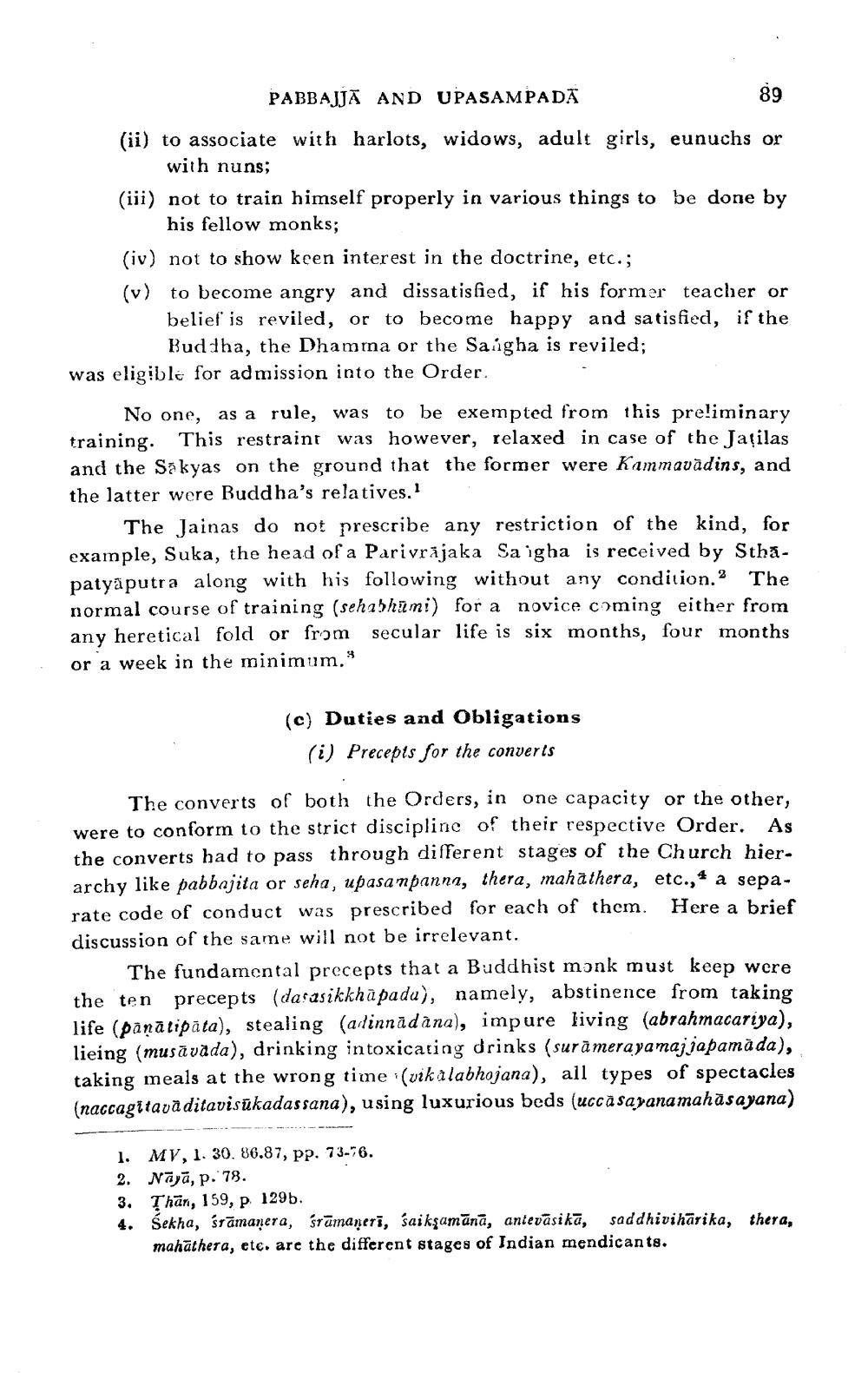________________
PABBAJJĀ AND UPASAMPADA (ii) to associate with harlots, widows, adult girls, eunuchs or
with nuns; (iii) not to train himself properly in various things to be done by
his fellow monks; (iv) not to show keen interest in the doctrine, etc.; (v) to become angry and dissatisfied, if his former teacher or
belief is reviled, or to become happy and satisfied, if the
Buddha, the Dhamna or the Sangha is reviled; was eligible for admission into the Order.
No one, as a rule, was to be exempted from this preliminary training. This restraint was however, relaxed in case of the Jațilas and the Sakyas on the ground that the former were Kammavadins, and the latter were Buddha's relatives.
The Jainas do not prescribe any restriction of the kind, for example, Suka, the head of a Parivrājaka Saigha is received by Sthapatyaputra along with his following without any condition. The normal course of training (sehubhumi) for a novice coming either from any heretical fold or from secular life is six months, four months or a week in the minimum."
(c) Duties and Obligations
(i) Precepts for the converls
The converts of both the Orders, in one capacity or the other, were to conform to the strict discipline of their respective Order. As the converts had to pass through different stages of the Church hier. archy like pabbajita or seha, upasanpannz, thera, mahathera, etc., 4 a sepa. rate code of conduct was prescribed for each of them. Here a brief discussion of the same will not be irrelevant.
The fundamental precepts that a Buddhist monk must keep were the ten precepts (dasasikkhapada), namely, abstinence from taking life (panalipata), stealing (alinnādana), impure living (abrahmacariya), lieing (musāvada), drinking intoxicating drinks (surämerayamaj japamada), taking meals at the wrong time (vikalabhojana), all types of spectacles (naccagitava ditavisükadassana), using luxurious beds (ucca saranamahāsayana)
1. MV, 1. 30. 86.87, pp. 73-76. 2. Nāyā, p. 78. 3. Ţhān, 159, p. 129b. 4. Sekha, śrāmanera, śrūmaneri, śaikşamānā, antevāsikā, saddhivihārika, thera,
mahāthera, etc. are the different stages of Indian mendicants.




